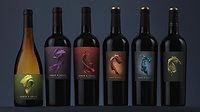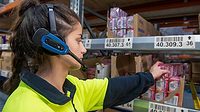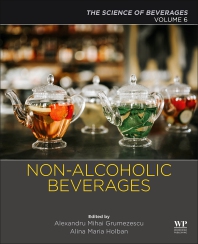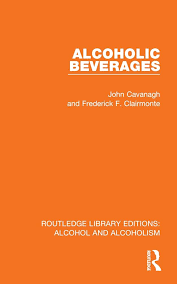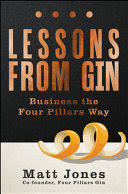Special Report
Licensing brings marketing advantages, consumer engagement
Economic opportunities prove to be beneficial for licensee, licensor

Image courtesy of Talking Rain Beverage Co.
After launching his own line of luxury streetwear in 2012, American fashion designer Virgil Abloh became the chief executive officer of the Milan-based label Off-White, a fashion house he founded in 2013. Today, Abloh who is known for his many collaborations that include partnering with IKEA and Nike, is quoted for saying, “The whole point of collaboration is that you give and take from each other, and that’s how you create things that are totally new.”
Similarly, collaborations through licensing agreements within the food and beverage space allow brands “to give and take from each other” and have become an important marketing lever in creating new products, experts note.
“It’s been around forever but feels like just now we’re at the height of both brands and consumers being excited and aligned on licensed flavors and products,” says Tarun Singh, chief marketing officer and CEO of BEAM Be Amazing, Nashville, Tenn.
Justin Clinger, assistant vice president of marketing at IT’SUGAR, Fort Lauderdale, Fla., echoes similar sentiments, noting an “explosion” of licensing opportunities for brands.
“Specifically, within the candy and confectionery market, we have seen some of the most beloved brands expand beyond their traditional candy products into a more diverse range of offerings,” he says. “IT’SUGAR has been lucky enough to participate in this moment by working with brands like Sour Patch Kids and Swedish Fish to develop some of the first sodas of their kind.”
Brian Sudano, CEO of S&D Insights LLC, Norwalk, Conn., notes that many brands have been licensed to this point.
“Nearly all are going from non-alcohol to alcoholic versions. The reason that the movement has primarily gone in this direction is due to regulatory complexity in the alcohol route to market,” Sudano explains. “The strength of flavored alcoholic brands (FMBs and RTDs) have made the environment ripe for crossing over to the alcohol realm.
“For soft drink companies, the advantages are having access to both alcohol blending technology, a partner well versed in regulation and norms around marketing and an alcohol licensed route to market system,” he continues.
Sudano adds that due to higher price points and dollar margins, the economics can work for both the licensee and licensor.
For both partners in the relationship the license agreements have been successful in providing incremental profitability and greater parent brand awareness among new customers.
“For both partners in the relationship the license agreements have been successful in providing incremental profitability and greater parent brand awareness among new customers,” he says. “So far, most of the activity has been in one direction, soft drinks to alcohol. However, the opportunity for licensing of certain alcoholic brands to non-alcoholic versions does exist.”
IT’SUGAR’s Clinger notes that, in the confectionery space, alcohol brands have jumped at the opportunity to create candy products infused with their iconic flavors.
“In IT’SUGAR stores, we carry liquor-infused chocolates from licensed brands like Bailey’s, Fireball and Jose Cuervo,” he says. “These products are great gifting items and offer an elevated candy experience for adults in our stores.”
S&D Insights’ Sudano points to other areas where licensing has occurred between beverages and food products primarily within ice creams and snacks. However, “the dollars are much smaller,” he says.
“Another area to watch is co-branding — food flavors incorporated into beverages — e.g., Sparkling Ice introducing the STARBURST flavor line. As companies continue to seek avenues for growth, this area will continue to generate interest,” Sudano explains.
Mixing and matching
For beverage brands looking to embark on licensing collaborations, experts highlight some of the opportunities and challenges in this space.
S&D Insights’ Sudano points to the opportunities present within beverage alcohol.
“There are many brands that play in different parts of the beverage market that have not moved into the alcoholic beverage marketplace,” he says. “It is important to find segments in which a brand competes in a non-alcoholic marketplace that the brand equities can translate into alcoholic market segments, e.g., Jack and Coke as an RTD or Lipton Hard Ice Tea as an FMB.”
However, Sudano notes that FMBs and RTDs can be difficult segments when it comes to sustained growth over a five year period.
“The biggest challenge is how to continue to attract new consumers into these transient market segments after the first year,” he says. “... As companies gain experience, they will adapt their strategies to lean into brands that are successful and get out early for brands not resonating with consumers.”
IT’SUGAR’s Clinger notes that licensing can open many doors for beverage companies to collaborate on new flavor profiles and tap into the loyal audience of different brands.
“In IT’SUGAR stores, we carry a range of candy-licensed energy drinks, sodas and juice products with brands like Toxic Waste, Skittles and Warheads,” he says. “By translating these flavor profiles into a variety of beverage forms customers get to experience their favorite candies in a new way.”
BEAM’s Singh echoes similar sentiments, noting that a well done collaboration can be extremely beneficial for all parties.
“Sometimes flavor is the focus and sometimes just the brand itself, but the crossover is extremely valuable and something I think will continue to grow,” he says. “We see this done via special edition flavors, colors, labels, celebrities, etc.”
Yet, Singh notes that finding the right partner for collaboration can be challenging.

Image courtesy of Lipton Hard Iced Tea
“Now that everyone is pursuing licensing it’s something that can easily be done wrong,” he explains. “In other words, licensing for the sake of licensing and not staying truly authentic to your brand and your customer — this can actually have an adverse effect on the overall brand and shouldn’t be taken lightly.”
As far as consumer reaction to the cross pollination of brands and or categories, Singh believes — from a marketing standpoint — licensing collaborations not only create a lot of conversation, but also further increase consumer engagement with brands.
“Additionally, it [brings the benefit of] being able to introduce your product, which the customer may have never heard of before, if not for the collaboration,” he says. “A good collaboration will almost always lead to new customer acquisition.”
IT’SUGAR Clinger says that loyal fans of candy brands have been thrilled with product expansions and are weighing in on the trend on social media.
“The beverage trend offers customers an opportunity to ‘taste test’ and compare the drink offerings to the original candy flavors,” he says. “Reactions have been positive and encouraging toward brands as they continue to expand and innovate their products.”
Taking the plunge
With all the current buzz around brand collaborations, experts highlight what factors to consider when embarking on a licensing partnership.
“I would say to consider your customer,” BEAM’s Singh says. “Would your customer truly enjoy this partnership and collaboration? Would they think it’s fun and unique even if it took them a second to warm up to it? Or would there be too big of a disconnect? After that step I would think about how to make the collaboration feel fun, cohesive, and truly ingrained into your brand and products.”
IT’SUGAR’s Clinger also notes the importance of considering the brand’s audience and keeping customers top of mind when developing innovative products.
“By combining core products with new trends and opportunities, brands can find great success in the licensed confectionery space,” Clinger says. “Staying true to your brand will keep loyal customers engaged as new trends and products emerge in the market.”
S&D Insights’ Sudano pinpoints ways for brands to maximize on a licensing partnership.
“How a partner fits from a cultural, vision, capability, commitment and consumer reach. Best to bring complementary skill sets or assets in order to increase likelihood of success and maximize the potential opportunity,” he concludes.
Looking for a reprint of this article?
From high-res PDFs to custom plaques, order your copy today!




